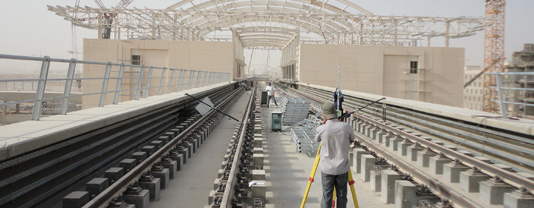Innovation in the rail infrastructure sector is far from simple. Technical and safety restraints are extremely precise and are often accompanied by a “conservative” attitude which makes it difficult for innovative or non-conventional solutions to gain ground. We spoke with the engineer Giancarlo Bono, author of university texts and design engineer of – among other things – the Italian slab track system, in cooperation with IPA of Calcinate (BG), now part of the WEGH Group. Abroad, Mr. Bono recently cooperated in the design of the rail infrastructure for the metro line of the “Princess Noura Bint Abdulrahman”UniversityofRiyadhinSaudi Arabia. In this case, Mr Bono’s experience enabled him to choose the right kind of superstructure for an automated metro line with a direct Vossloh 336 fastening system, entirely on a single span continuous viaduct for an overall length of around12.5 km, on a double track with radius curves of112 musing continuous welded rail (CWR) for UIC 54 rails with temperature variations of40°C, taking into account the need to minimise the transmission of vibrations to any sensitive buildings located in the area adjacent to the track. To make the design engineering even more stimulating, the track was fitted with switch devices and expansion joints, so that it was necessary to shape the rail with the interactive fastening system, with the decking on deformable supports connected to the pillars for stretches of up to889 m.
Railway Engineering: Mr Bono, let’s start from the slabs, the concrete blocks that make it possible to lay the track without requiring the traditional ballast. You were responsible for developing this system in Italy right from the outset – we are referring to the mid-1980s. Now they are a technical reality and a product that is perfectly acknowledged and widely used. But how did these slabs actually come about?
Full article is available only for registered users.
Click the link below to download pdf version of Railway Engineering
